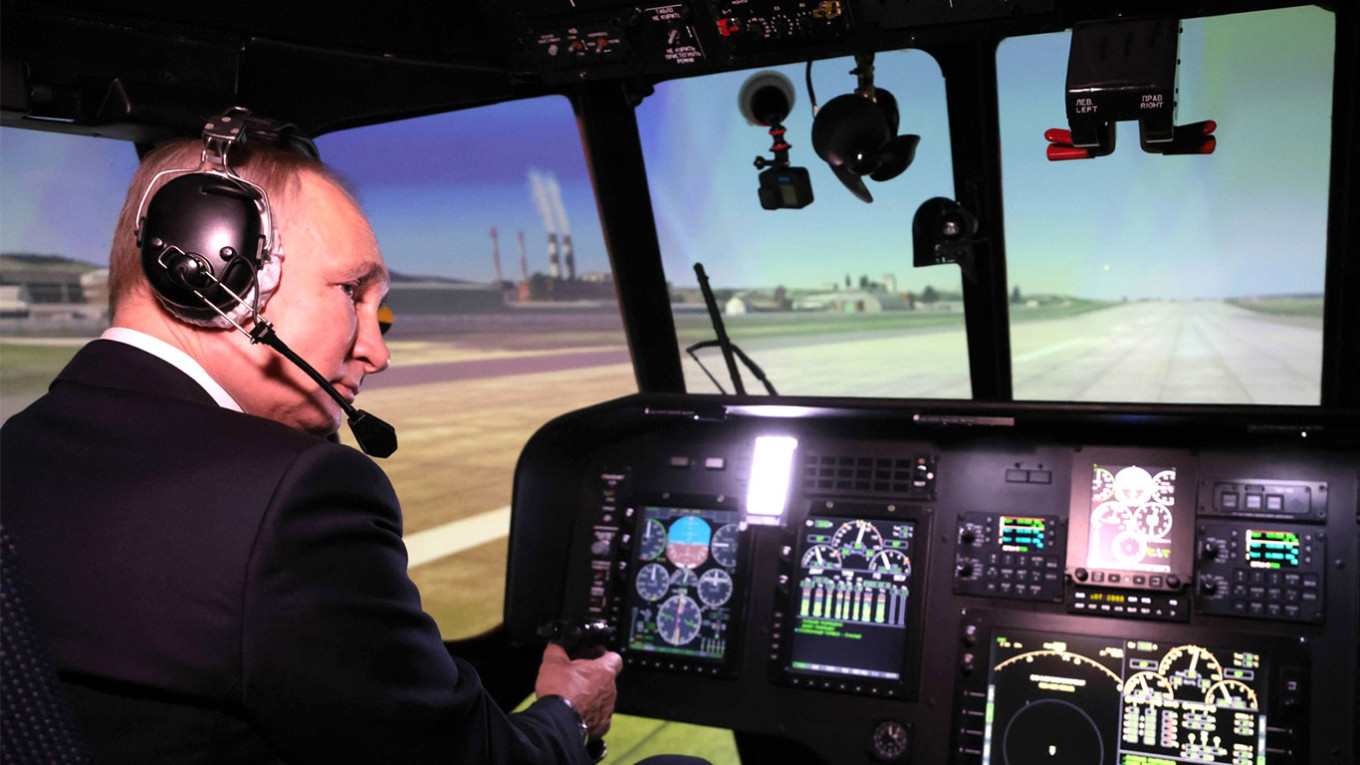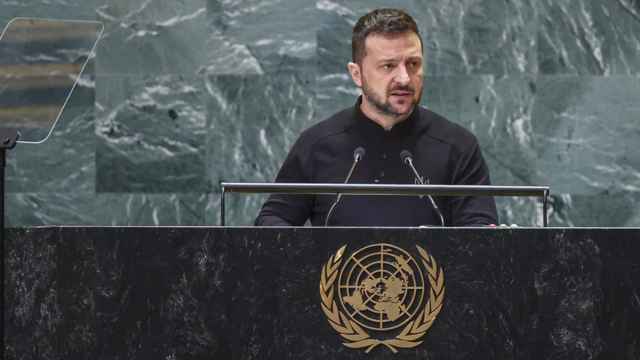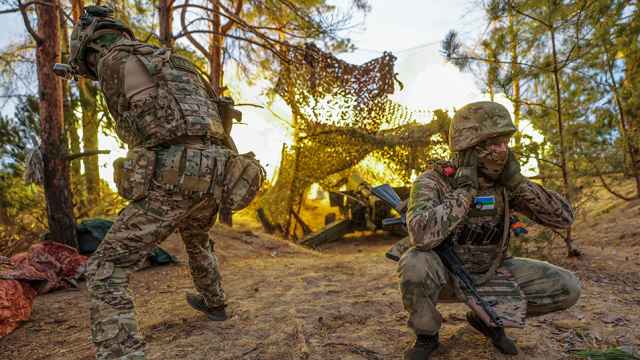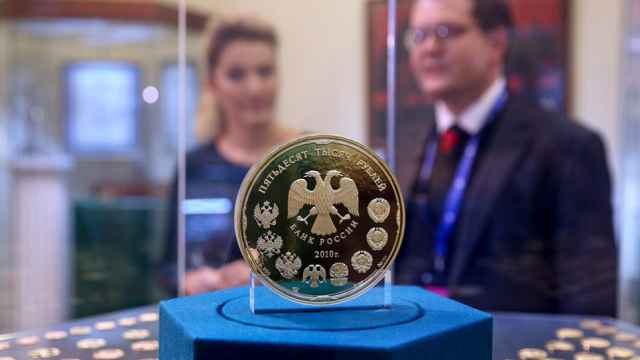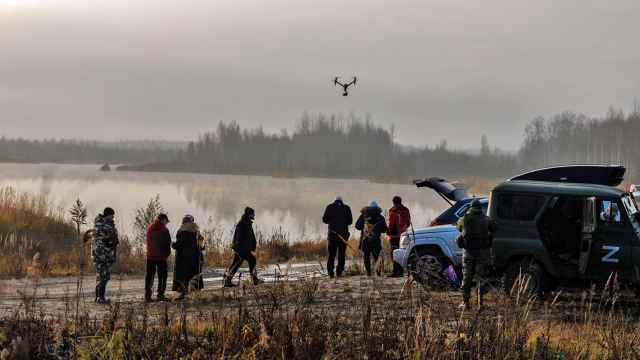The Russian government has announced its proposed budget for 2024. For the first time in modern history, the country is set to spend 6% of gross domestic product (GDP) on the military, and defense spending will exceed social spending. The war against Ukraine and the West is not only the Kremlin’s biggest priority; it is now also the main driver of Russia’s economic growth.
The record defense spending shows that the Kremlin has no intention of ending its war against Ukraine anytime soon: on the contrary. Even if the fighting becomes less intense or the conflict becomes frozen, the money will go toward replenishing Russia’s depleted military arsenals. Likewise, it has enough cash to fund an escalation such as the imposition of martial law or full mobilization.
The new budget, which is awaiting approval from the State Duma, envisages that revenue will grow by more than a third in 2024, reaching 35 trillion rubles ($349 billion). Of that, 11.5 trillion rubles is expected to come from the oil and gas sector. Planned expenditure is 36.6 trillion rubles (a 26.2% rise on this year). This means that the budget deficit next year, at least according to the government’s plans, should significantly decrease—from a planned 2% of GDP in 2023 to 0.8% of GDP in 2024.
Social spending is forecast to increase by approximately 1 trillion rubles to 7.5 trillion rubles in 2024. Expenditure on national security (including on agencies like the National Guard internal military force and the Federal Penitentiary Service) will rise from 3.2 trillion rubles to 3.5 trillion rubles. Spending on education and healthcare, in contrast, will remain at this year’s level, meaning a real-term reduction in 2024.
Despite these spending commitments, the Economic Development Ministry sees inflation increasing by just 4.5% in 2024. GDP growth is expected to be 2.3%, and Urals oil is forecast to average $71.30 per barrel (despite the price cap of $60 imposed by the G7). The average ruble-U.S. dollar exchange rate is expected to be 90.1 rubles.
In other words, the soaring defense and social spending in the budget will be largely financed through the gradual devaluation of the ruble, a process that is already well under way. A moderate budget deficit may, indeed, help restrain inflation.
Defense spending in 2024 will almost double compared to this year. While that is less than the 12–17% of GDP that the Soviet Union was spending on defense at the height of the Cold War, it is comparable to U.S. military expenditure in the 1980s. The current peak in spending has its origins in 2011, when the Kremlin embarked on a nine-year rearmament program worth about 20 trillion rubles.
Most of Russia’s defense spending will go toward producing military equipment, as well as payments to those wounded in Ukraine and the families of those killed. However, the growth in spending will also be eaten up by the sector’s long-standing inefficiency and the unprofitability of many of its companies. Since Russia’s full-scale invasion of Ukraine in 2022, many of these problems have only gotten worse.
For example, despite rising defense spending, the state-owned defense conglomerate Rostec made less income from the sale of weapons and military equipment in 2022 than it did in 2020. Roscosmos, the Russian space agency, ended 2022 with losses of 50 billion rubles, compared with losses of 31 billion rubles the year before. And the state-owned United Shipbuilding Corporation saw a loss of 20 billion rubles in 2022, compared with a loss of several billion rubles in 2021 and a net profit in 2019.
All of this suggests that the growth in military spending this year is largely an attempt by the government to keep pace with these costs. A similar process is likely to occur in 2024, given Russia’s defense sector’s dependence on imports. Western sanctions, the devaluation of the ruble, and the cost of import substitution mean a radical increase in the price tag of military equipment.
The Kremlin isn’t just gearing up for a prolonged war in Ukraine, but apparently sees certain economic benefits from such a scenario. Unlike oil, guns drive industrial growth: economic growth reached 4.9% in July. Industries directly related to the war have seen spectacular growth: production of transport is up 66.7% from last year, computers and electronics are up 42.6%, navigation devices 72.4%, electrical equipment 29.5%, and protective clothing 40.4%. Industries indirectly linked to the fighting are also experiencing abnormally high growth rates: equipment repair and installation is up 8.5%, while the food industry saw 11.3% growth.
Defense production is operating at full capacity, and most civilian sector industries have returned to their pre-war production levels. As a result, Russia has a record low unemployment rate of just 3%.
It seems the government is unconcerned about workforce and production limitations, and is increasing spending regardless, thereby stimulating internal demand. Yet this is a risky approach. A shortage of personnel together with Western tech sanctions mean productivity is unlikely to increase.
In addition, spending that is so skewed toward military and social needs can only be sustainable if the state is at war. A wartime economy dependent on imports is destined for high inflation, which means that interest rates will likely remain high. This, in turn, poses a risk to investment levels.
By staking everything on rising military expenditure, the Kremlin is forcing the economy into the snare of perpetual war. On the one hand, that means it will be increasingly difficult for the state to continue financing the fighting in Ukraine without causing living standards to deteriorate. On the other, if there is a reduction in military spending, it will inevitably lead to a significant structural shock that will take considerable time to overcome. Either way, it will be ordinary Russians who pay the price.
This article was originally published by The Carnegie Endowment for International Peace.
A Message from The Moscow Times:
Dear readers,
We are facing unprecedented challenges. Russia's Prosecutor General's Office has designated The Moscow Times as an "undesirable" organization, criminalizing our work and putting our staff at risk of prosecution. This follows our earlier unjust labeling as a "foreign agent."
These actions are direct attempts to silence independent journalism in Russia. The authorities claim our work "discredits the decisions of the Russian leadership." We see things differently: we strive to provide accurate, unbiased reporting on Russia.
We, the journalists of The Moscow Times, refuse to be silenced. But to continue our work, we need your help.
Your support, no matter how small, makes a world of difference. If you can, please support us monthly starting from just $2. It's quick to set up, and every contribution makes a significant impact.
By supporting The Moscow Times, you're defending open, independent journalism in the face of repression. Thank you for standing with us.
Remind me later.



